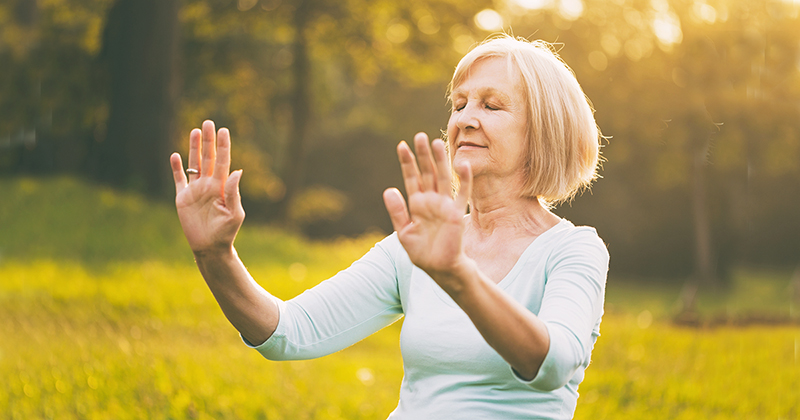As adults age into their older years, their bones become less dense, this is even more true for females over 50 years of age. This can lead to problems such as osteoporosis, and the bones being more prone to breaking, especially if one suffers a fall.
Between the ages of 25 and 50, bone density is relatively stable as the rate of bone formation is equal to the rate of bone breakdown. After age 50, there is typically a greater rate of bone breakdown (known as resorption) than there is of bone formation. This often leads to accelerated bone loss, particularly around the time of menopause for women.
A study found that adult skeletal muscle can benefit greatly from a combination of both muscle strength training and tai chi. This has been shown through multiple CT scans which have revealed that this type of training can lead to an increase in muscle mass and improved bone density. Furthermore, it has also been found that this combination can help to improve balance, coordination, and flexibility.
The study had 182 adults over 60 years of age who had no significant history of doing regular exercise and physical activity. The participants were split into four groups: the Tai Chi group which included 52 people, the student muscle strength group which included 45 people, the student muscle group which combined with Tai Chi group which included 45 people, and 40 people who were included as a control group.
The three other groups trained tai chi (over 4 times weekly), muscle strength training, the muscle training as well as tai chi for a period of 6 months. The Lumbar spine “L1-4” BMD (bone mineral density) as well as the Berg scores were about the same of those for adults before doing exercise and then at 3 month and 6 month periods after the exercise.
Results of this study showed a significant difference in Berg Balance Scale scores and the lumbar spine BMD between the group who did Tai Chi, and the students before and after exercising combined with the muscle strength training. The difference between the groups was found to be significant.
The combined group that did core muscle strength training with Tai Chi saw higher scores in Berg Balance Scale scores and the lumbar spine BMD after 6 month period, as opposed to 3 months. There was also a positive correlation between CT value of the lumbar vertebral bone calcium and BMD.
There is growing evidence that both combined and single training of the core muscular strength or the practice of Tai Chi can improve the mineral density of the lumbar bone as well as balance function for the elderly. Several studies have shown that these activities can help to increase bone mass, reduce the risk of falls, and improve overall balance and coordination.
Source: https://pubmed.ncbi.nlm.nih.gov/35795616/
Check out our other health related articles on Tai Chi
